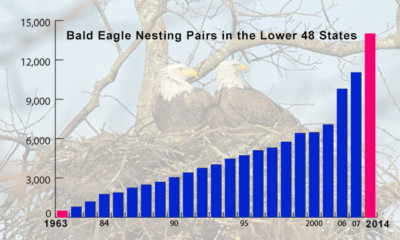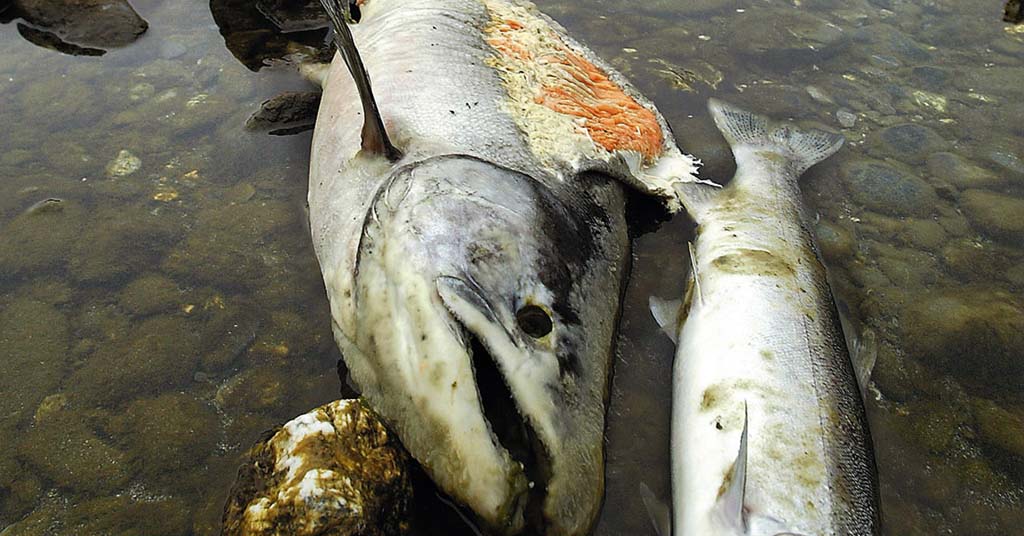By Dac Collins. Aug. 22, 2019. Last Monday the U.S. Fish and Wildlife Service and the National Marine Fisheries Service made a contentious and contradictory announcement: that by finalizing the changes proposed in July, the Trump administration is “improving the implementation regulations of the Endangered Species Act”. Apparently the administration plans to achieve this by narrowing the scope of protection for endangered species, removing the existing blanket protections for threatened species, and allowing federal agencies to consider the economic impacts of protecting these plants and animals instead of basing their decisions on science alone.
(More on those details here.)

Photo courtesy of Wikimedia Commons.
Secretary of the Interior David Bernhardt has argued that these revisions will “ameliorate some of the unnecessary burden, conflict and uncertainty that is within our current regulatory structure.”
But conservation groups, wildlife advocates and other opponents of these “improvements” are crying foul. They say the changes represent the evisceration of the ESA — a move that fits squarely within the administration’s larger strategy of giving mining, fossil fuel and other extractive industries the proverbial keys to the kingdom. They also criticize the abysmal timing of the decision and point to a recent UN report, which warns that “around 1 million animal and plant species are now threatened with extinction, many within decades, more than ever before in human history.”
Brett Hartl, government affairs director at the Center for Biological Diversity, told the Times back in July that “these proposals would slam a wrecking ball into the most crucial protections for our most endangered wildlife.” And the attorneys general of Massachusetts and California have already said they will join a coalition of environmental groups in filing suit against the administration. They say the modifications to the ESA are in clear violation of the law’s overriding purpose…which is a pretty fair assessment if you look at what the so-called “unnecessary burdens” have accomplished over the past 46 years.
Passed by Congress in 1973, the Endangered Species Act increased protections for all plant and animal species listed as threatened or endangered, as well as their critical habitats. (“Increased” because the ESA was actually a stronger, more effective version of the Endangered Species Conservation Act that was implemented in ’69.) On the day that President Nixon signed the ESA into law, he said: “Nothing is more priceless and more worthy of preservation than the rich array of animal life with which our country has been blessed.”
Today, you can find living proof of the law’s success nesting in the spruce trees of Southeast Alaska, gorging on huckleberries in Yellowstone National Park, and swimming in the brackish waters of the Everglades. But it’s not just our nation’s iconic species — the eagles, grizzlies and alligators — who have benefitted.

A poster child for the Endangered Species Act, the bald eagle has made an impressive comeback since the species was listed as endangered in 1978. Graph courtesy of the American Eagle Foundation.
According to a study released by the Center for Biological Diversity in 2012, roughly 90 percent of the species that have been federally listed under the ESA have seen their populations either stabilize or improve. Black-footed ferret, for example, experienced a population increase of over 8,000 percent between 1987 and 2008, while the population of Atlantic green sea turtles grew by a rate of more that 2,000 percent between 1989 and 2011. Meanwhile, lesser known species like the El Segundo Blue Butterfly and the Okaloosa darter saw similar or bigger increases (22,312 percent and 7,297 percent, respectively)…all because of the protections they received under the Endangered Species Act.
Even the U.S. Fish and Wildlife Service — the same federal agency that plans to improve the effectiveness of the law by gutting it — touts the fact that the ESA has “prevented the extinction of 99 percent of the species it protects since it’s inception in 1973.”
In other news, rumors are swirling that the U.S. Dept. of Transportation plans to make a similar announcement next week: that the administration is improving the safety of our nation’s interstate system by doing away with the concept of lanes, raising the minimum federal speed limit to 90 miles per hour, and replacing all rest areas with drive-thru liquor stores.












??? ?? ????? ?????? ????????
????? ? ????? ? ??????? ?????? https://www.ukr.net/.
??? ???????????? ???????? ?????? ? ??????????? ????????.
?????????? ? ???
Hello, I’m good girl and looking for good man. If you are interested, I’ll send my photo. Thank’s https://tinyurl.com/ybag734r